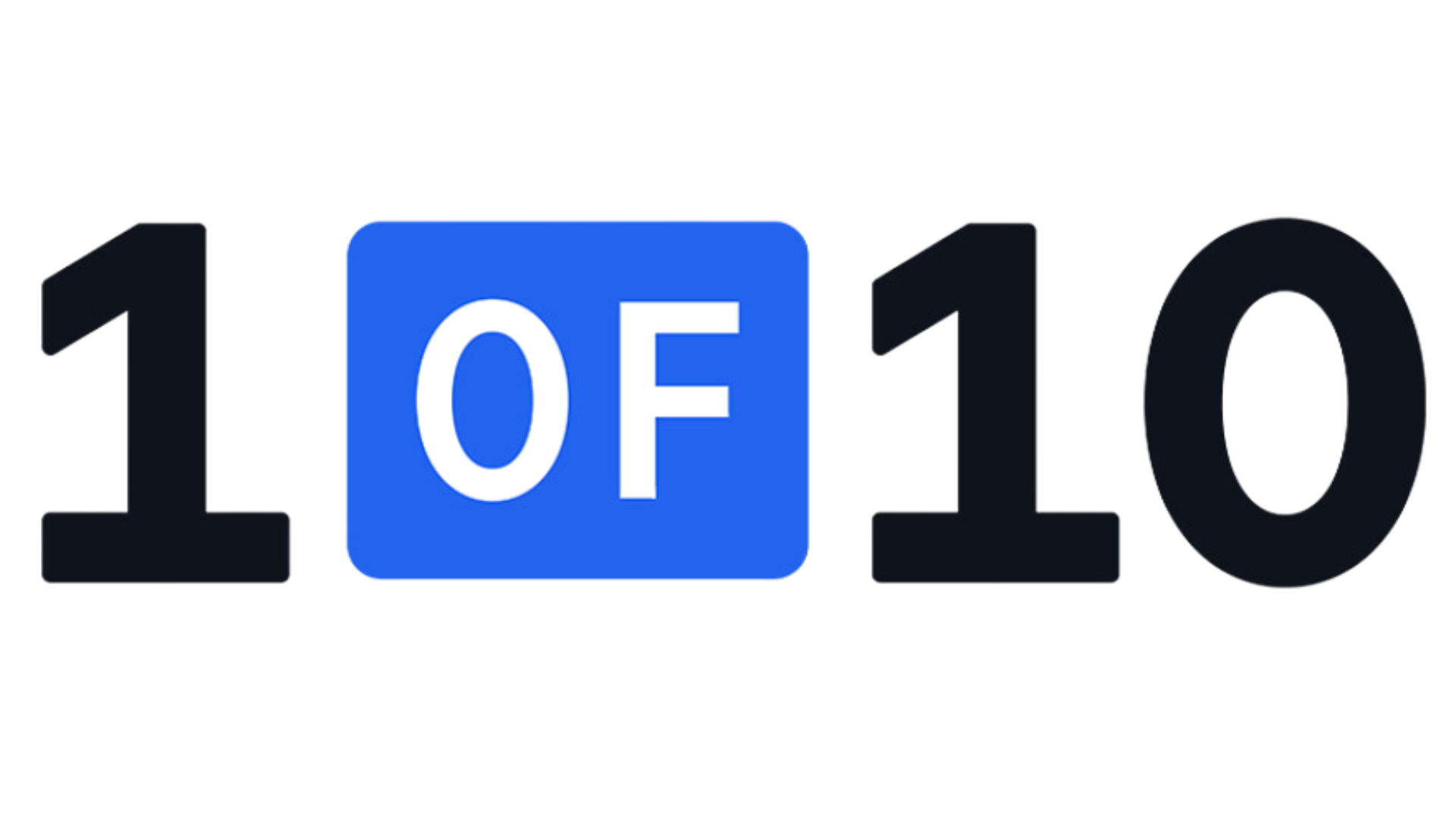If I Were Starting a YouTube Channel, I’d Do This.
Table of Contents
- Step 1: Choosing A Niche When Starting A YouTube Channel
- Step 2: Finding Ideas When Starting A YouTube Channel
- Step 3: Packaging Your Idea When Starting A YouTube Channel
- Step 4: Following Niche Formats When Starting A YouTube Channel
- Step 5: Final Checks When Starting A YouTube Channel
- Step 6: How To Upload When Starting A YouTube Channel
- Step 7: Test, Iterate & Learn When Starting A YouTube Channel
- Step 8: Rinse and Repeat When Starting A YouTube Channel
Growing a YouTube channel from scratch isn't easy, but with the right strategy, you can increase your chances of success. Start by choosing a niche that aligns with your interests and has a large enough audience. Then, use an outlier ideation method to find promising video ideas.
Growing a YouTube channel or any social media business from scratch is no easy task (whether long-form or Shorts!). However, with the guide and strategy outlined in this thread, you’ll not only avoid the most common fatal errors, but also learn how to create videos with the best chance of going viral from our blog (Going viral is a science, not luck).
P.S If you’re a complete beginner, come back to this later. First you just need to start making some videos and learn the basics to help with your channel's growth before going over these tips and guide!
Step 1: Choosing A Niche When Starting A YouTube Channel
What This Means
While choosing your niche may seem like a straightforward step when starting a YouTube channel and brand, there's actually a strategic approach you can take to ensure you pick a niche with good potential.
This ultimately comes down to 3 factors, which can be seen below.
- Interest. This may sound cliche, but it is important to enjoy the content you’re producing and editing when starting a YouTube channel, especially at the beginning. Not only because you’ll be more likely to stick at it, but also because you’ll have a deeper understanding of your target audience, which you can leverage to your advantage with your subscribers.
- TAM. You need to ensure that your niche has a large enough total addressable market. Otherwise, getting the number of views per video you want may be extremely difficult, if not impossible. More on how to check this coming up 👇
Low Competition. While this isn’t essential, selecting a niche when starting or at least a sub-niche, with lower competition will make the process of going viral and getting subscribers to click a lot easier. More details on how to do this below.
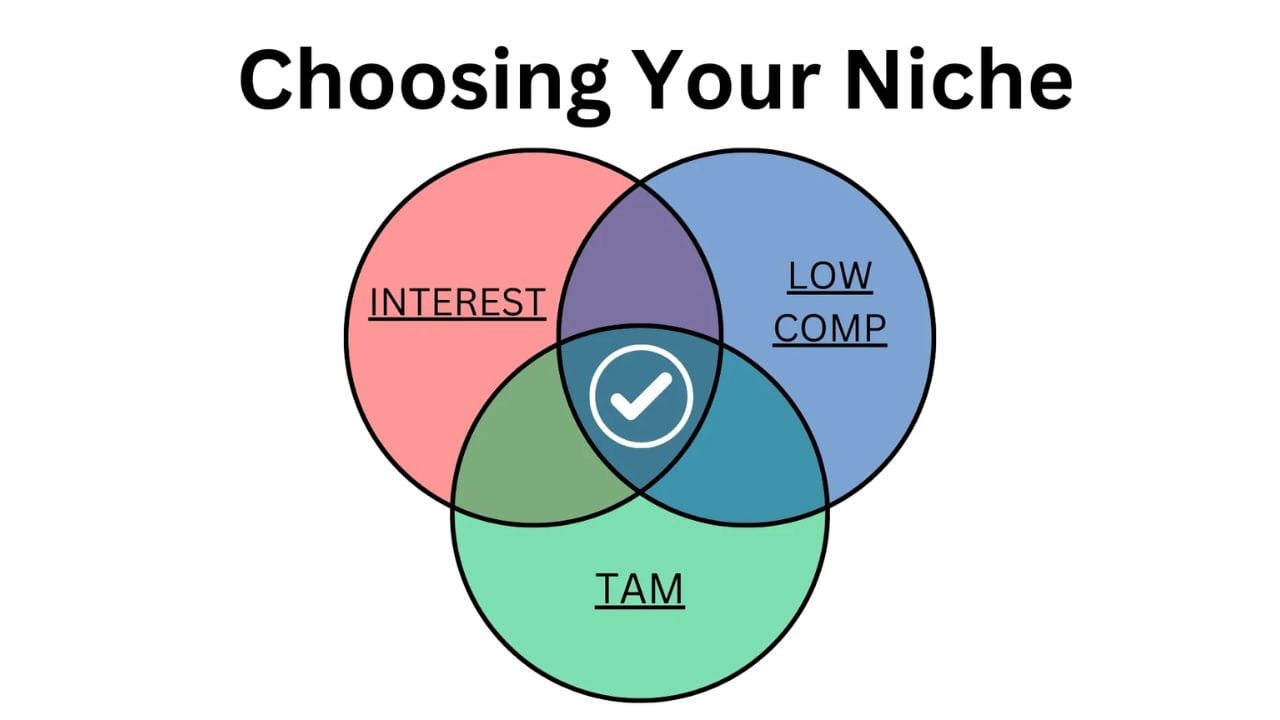
Validating Your Total Addressable Market When Starting A YouTube Channel
Once you have a niche that you enjoy in mind, it’s now time to validate the total addressable market to ensure that there are enough viewers to reach the goals you have in mind and to get them to click.
A good indicator for finding the total addressable market is to look at something the top few creators in your niche are averaging in terms of views.
The easiest way to do this is to download the free 1of10 extension (link in bio), then head over to your competitors channel and look for videos with an outlier score between 0.8x and 1.2x.
You can also have a look at their highest outliers for a rough idea of what the potential view ceiling could look like for some topics.
You’re ideally looking for an average view count in the hundreds of thousands or higher (There are a few exceptions to this rule, though)
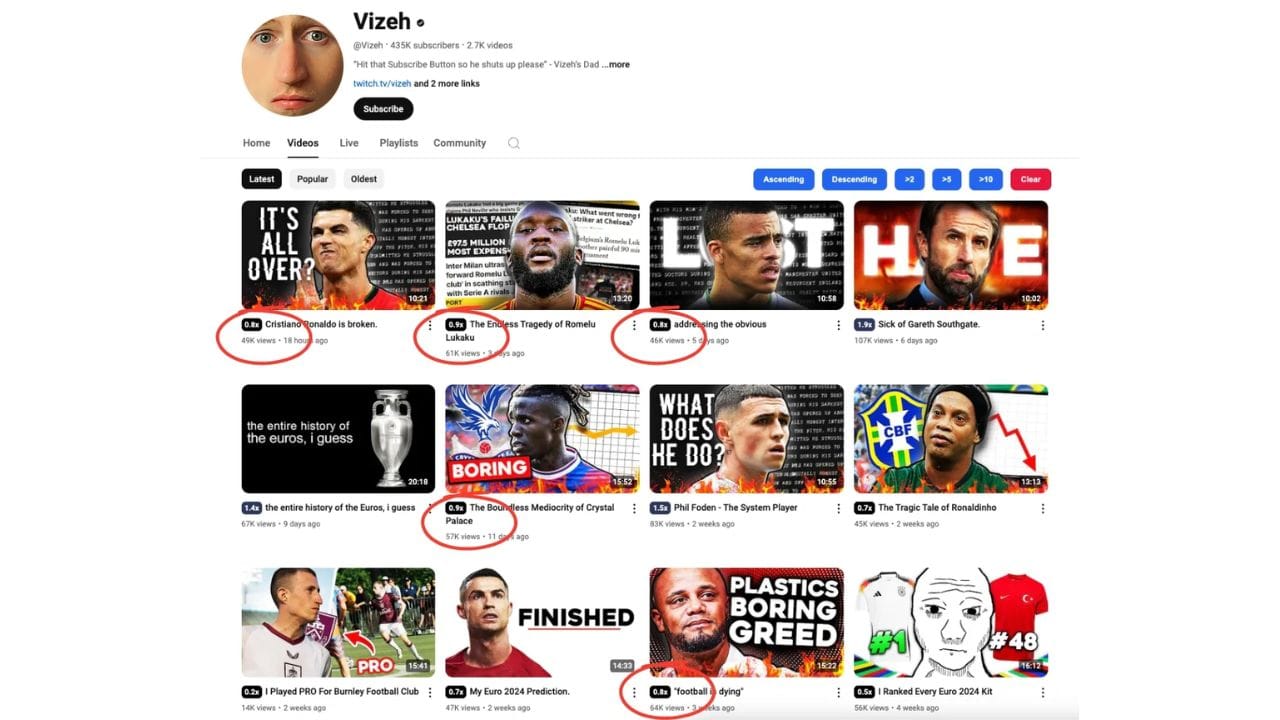
Creating a Low Comp Niche When Starting A YouTube Channel
Finding a niche with very low competition on YouTube in 2024 is like looking for a needle in a haystack.
Instead of trying to find the impossible, you’re much better off looking for a way to differentiate yourself from the competition and thus create your own micro-niche.
There are many ways to do this, for example, you could produce higher quality content than others in your niche, you could make content in a different style / length, or finally, you could niche down further (be careful not to shrink your TAM too much doing this).
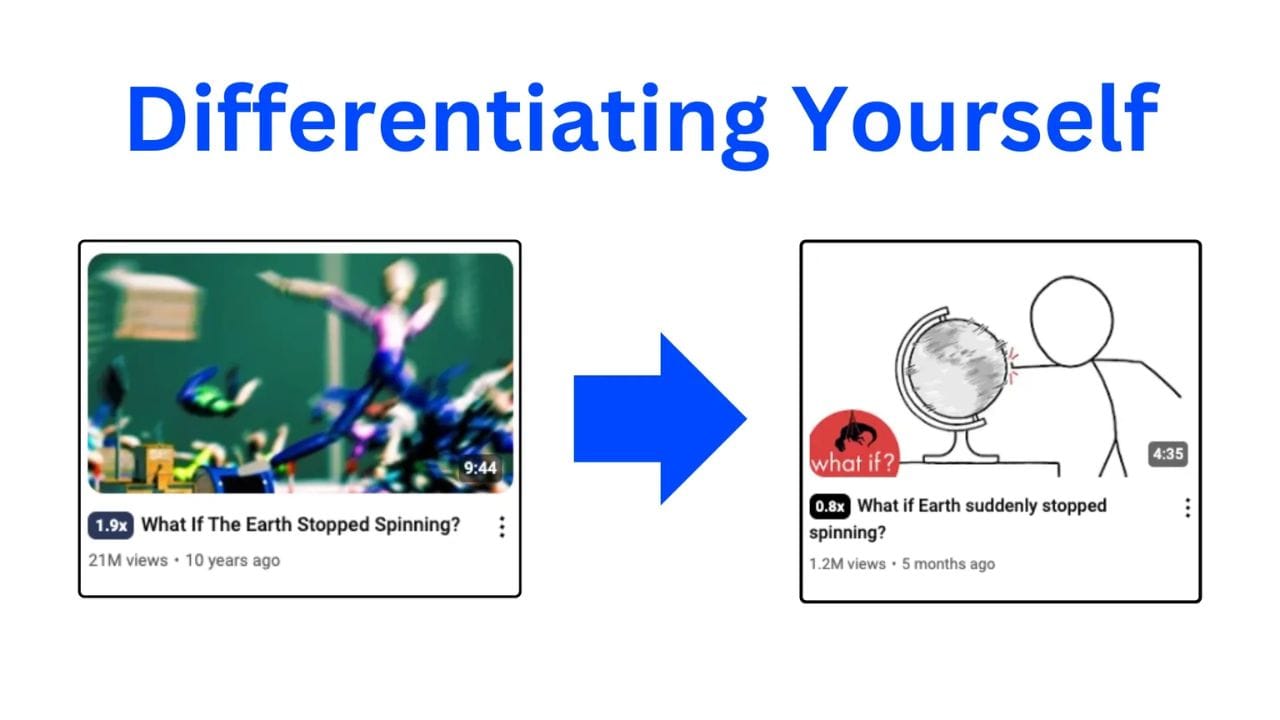
Step 2: Finding Ideas When Starting A YouTube Channel
What This Means
Once you’ve found a high-potential niche, the next step is to find an idea to reach this new audience.
We’ve found the most reliable way of finding ideas that consistently go viral is to use an outlier ideation method.
This essentially consists of finding videos that over-performed (outliers), and then adapting these ideas to create new unique videos for your channel (while keeping the elements that made it go viral in the first place).
When it comes to outlier ideation, there are 3 main ways you can find ideas to get viewers to click:
- From within your channel.
- From within your niche.
- From outside your niche.
As this is a new channel, we’ll focus on methods 2 & 3.
Finding Ideas From Within Your Niche When Starting A YouTube Channel
The best way to find outliers from within your niche is using the 1of10 app, which can find using the link in our bio (you can also do this on YouTube, it will just take much longer).
Firstly, you want to create a list of all competitors within your niche and add these channels to a tracked folder in 1of10.
Next, filter this folder to only show videos uploaded within the last 6 months, at least a 2x outlier score, and more than 100k views (you may need to tweak these settings depending on the results).
Now, look for patterns in ideas & titles in order to find a good outlier format (the larger the outlier score, the better).
For example, using the Soccer Video Essay niche, here’s a format I found that I can share:

Adapting the format When Starting A YouTube Channel
Once you’ve found some idea formats, spend time and breakdown exactly why you think this format/video performed well. From here, it makes it easier to adapt the idea, while keeping the viral aspects.
For Example:
- The Entire History of Pele
- The Entire History of Maradona
- The Entire History of Real Madrid
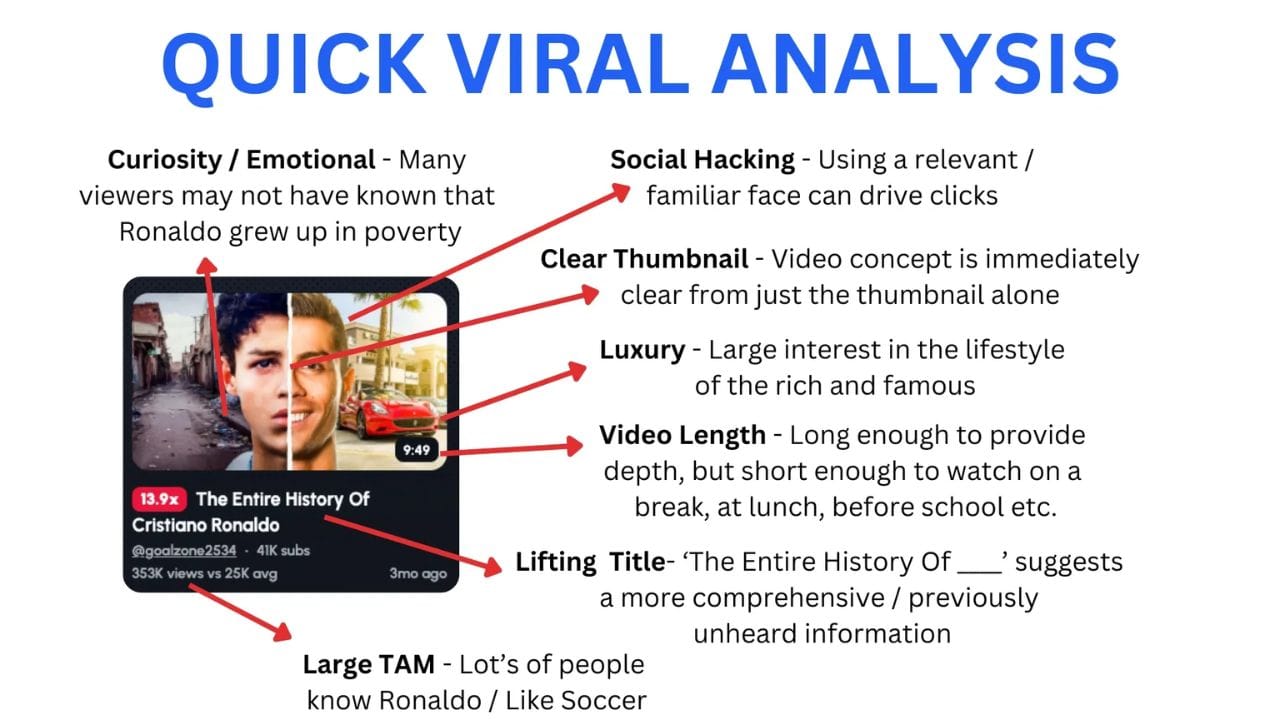
Finding Ideas From Outside Your Niche When Starting A YouTube Channel
Finding ideas from outside your niche is where things get a little more tricky.
To start, you first want to create a list of adjacent niches. Sticking with the Soccer niche, these could be things like, Basketball, Hockey, NFL & Baseball.
I’s important to find niches with similar audience characteristics, as this will give you the best chance of finding ideas that resonate with your audience.
Once you’ve found several adjacent niches, you next want to create tracked channel folders for each of these in 1of10.
Again, using the same filters we outlined earlier, browse through these folders and look for patterns in ideas and titles.
Ideally, here you’ll be looking for idea formats that have worked across several different niches, as this is a great validator to suggest it could work in your niche too.
Once you’ve found an idea format, follow the steps outlined earlier.
Finalising Your Ideas When Starting A YouTube Channel
Once you’ve got a list of data-backed ideas, it’s time to validate these ideas and find which ones are suitable for moving forward with.
To do this, you’ll want to look at how many outliers there are for each idea format, how recently the last outliers were uploaded, and whether you can find recent examples of people using this format without success on YouTube.
Ideally, the idea format will not have been done countless times, it will have recent viral examples, and there won’t be any examples of creators who attempted the format without success recently (excluding examples where the reasons are obvious).
Any ideas that don’t meet these criteria can be removed from your list (you may have to go back to the previous step, but it’s worth it to find a great idea).
Step 3: Packaging Your Idea When Starting A YouTube Channel
What This Means
Once you have decided on the idea you would like to move forward with, it’s time to create the packaging concepts.
A great place to start with this is by looking at the outlier videos that inspired this idea and try to dissect the reasons for why that packaging worked so well. Once you know the reasons why it worked, creating your own packaging becomes much easier.
To help with this, you can pull the video up in 1of10, and then select ‘See Similar Thumbnails’ (See example below).
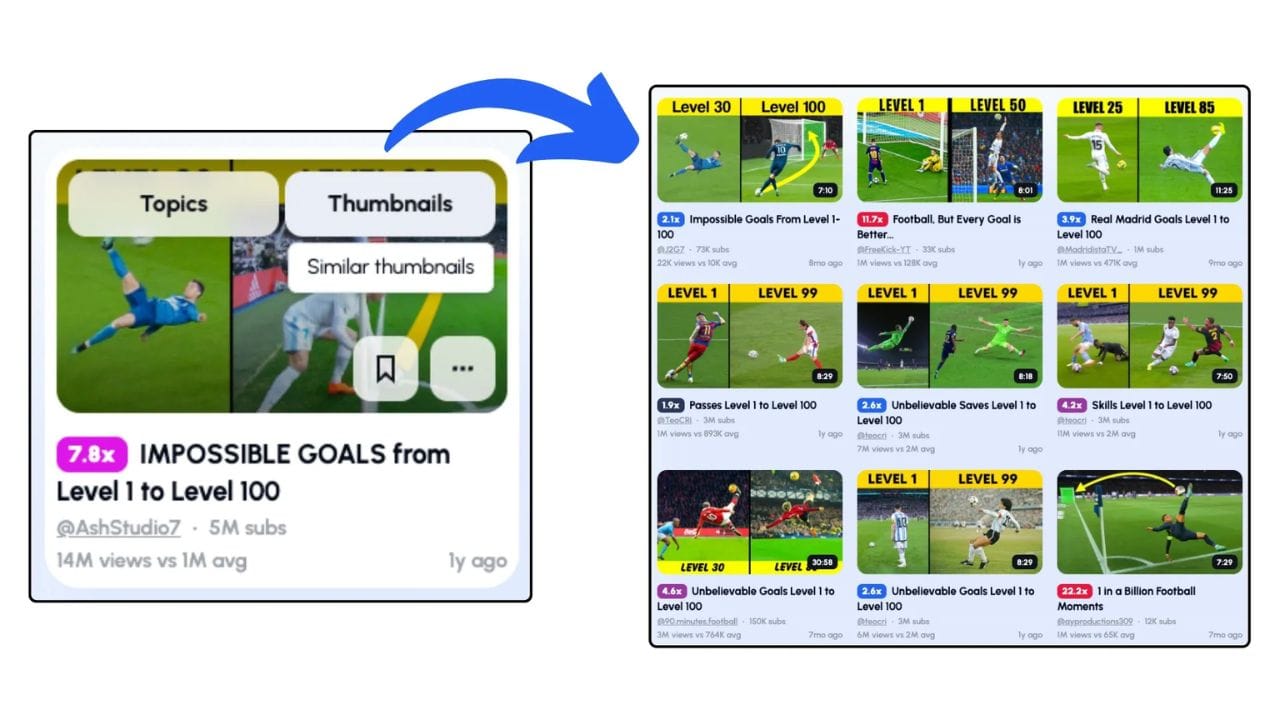
You can filter these results and use this for inspiration for both the title and thumbnail format. It’s a good idea to prepare at least 2 thumbnails in a completely different style, as you’ll be testing these later on.
(This can also be a great way for finding new idea formats)
Step 4: Following Niche Formats When Starting A YouTube Channel
What This Means
Now that the idea, title and thumbnail have been decided, it’s almost time to start creating your video.
However, first it’s worth taking a moment to understand the type of content and equipment your audience likes to consume from YouTubers.
To do this, watch some videos from the biggest creators in your niche, and see whether you can spot any patterns in the video length, pacing, intro style, humour etc.
After this, it’s time to make the video!
Step 5: Final Checks When Starting A YouTube Channel
What This Means
Once you’ve finished creating the content, it’s a good idea to check your final packaging concepts to ensure that they’re clear and stand out on the home page.
The best way to do this is using the free 1of10 extension. From here, you can upload your thumbnail and title to see how it would look on the YouTube homepage!
Step 6: How To Upload When Starting A YouTube Channel
What This Means
As Youtube are rolling out the thumbnail A/B test, it’s a good idea to test at least 2 entirely different thumbnail concepts for each video.
Once a winner has been determined, you can then refine your test further by making several variations of the winning format (ie. testing different text variants or colours in the thumbnail).
You can repeat this process several times as long as the video continues to get impressions.
Step 7: Test, Iterate & Learn When Starting A YouTube Channel
What This Means
Finally, the most important step - learning!
It’s unlikely that every video you make performs well, so it’s important to reflect on videos that performed badly in order to learn from what went wrong and what you can do differently moving forward.
On the other hand, when a video does perform exceptionally well, you should always look into ways of doubling down on the format. It’s not uncommon to be able to make multiple viral videos from just one idea format.
Here’s an example from MrBeast doing exactly this below:
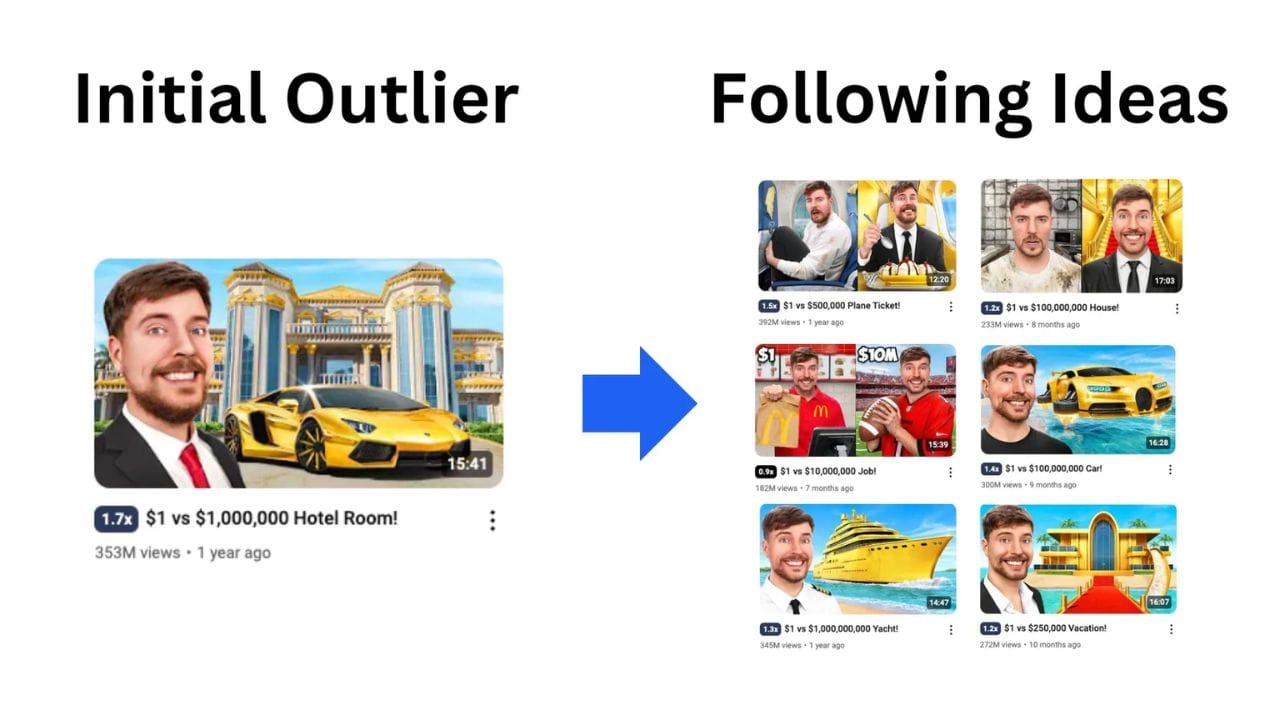
Step 8: Rinse and Repeat When Starting A YouTube Channel
What This Means
After creating your first video, now is the time to rinse, learn and repeat the process! Each time you’ll get better and better and sooner or later you’ll be making more viral videos than not!
You can learn more about the 1of10 tool or download our free chrome extension.
